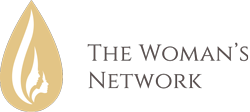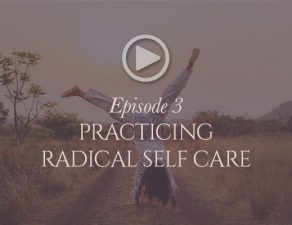
Executive Mindfulness: What Do We Have To Lose?
![]()
When one thinks of mindfulness, the image that typically appears is that of a tie dye clad person with long dreadlocks sitting on a meditation cushion as the aroma of incense permeate the room.
However, meditation and mindfulness are not symbiotic…nor are they completely different. Understanding the basics of some simple mindfulness practices can help create new images of mindful people, who like many in the corporate world, are wearing uncomfortable suits and are sitting in a board room chair. And, perhaps understanding a few basic mindfulness practices could influence you, an executive leader, in a very positive way.
Let’s start with a clear definition of mindfulness…
Mindfulness is the mental state achieved by focusing one’s awareness on the present moment, while calmly acknowledging and accepting one’s feelings, thoughts, and bodily sensations.
Keeping that definition in mind, allow me to provide you with a few examples of simple mindfulness strategies that could be incorporated into your leadership vernacular…
Pausing
In our executive worlds, it is counterintuitive to consider pausing when work demands and deadlines are looming…but haven’t we been spinning in circles long enough? Aren’t we tired of hearing the never ending stories of why someone didn’t meet deadline when all we really want to hear is how it is going to be completed?
When our constant spinning, and the constant spinning of those around us, begins to interfere with productivity, perhaps we should consider leaving performativity as a status symbol behind and take a few brief moments in our days to pause, think, and execute in a direct route instead of in several different directions that can only lead to confusion around us.
Breath Awareness
Are you breathing? If you’re like most adults in this hectic era of technology and high speed everything, you may not be able to answer this question. Let me reassure you, if you’re reading this, you are indeed breathing. What I cannot answer for you is if your breathing is helping you to simply maintain life or enrich it.
One breathing strategy that I have used with clients is to set an hourly timer throughout your day. It can be a subtle timer without causing great interference. When you recognize your timer, take approximately 10 seconds out of that minute to inhale deeply through your nose and then exhale out your mouth.
Notice if this helps alleviate tension or if you recognize any other benefits. There are thousands of oxygen receptors in the average human nose. These receptors allow oxygen to hit your bloodstream quicker than if you were to breathe through your mouth. When this oxygen rich blood gets to your brain, you begin to think more clearly. It’s a win-win. You remember that you are a living, breathing creature, and your brain then begins to work harder for you. Breath awareness also brings you back to the present and away from the anxiety of the future.
Learn about Airin: TWN’s mindfulness app that reminds you to stop and breathe throughout the day so you can reconnect with your true self
Perspective Taking
This may be where I lose a few people. But, trust me, considering another person’s perspective does not mean you have to surrender to them or completely lose all control and authority. It may just make you want to. But, just a little bit. Not completely. Oftentimes in leadership, we consider ourselves leaders because we are able to take command, run an organization, make authoritative decisions based on experience and expertise, and be the one person that others can go to for advice or suggestions.
What if we modeled all of those things by viewing others in our teams in such a way? What would happen if, instead of having to constantly feel as though no one is listening to you or no one understands why you had to make the tough decisions, you asked others what ideas they had and what decisions they would make? Or, what if you simply asked your employees how they think things are going and honored the differences in their way of thinking instead of feeling threatened by them?
Don’t get me wrong, I realize that this may be unchartered territory for some of you reading this, but time and time again, leaders who purposefully chose to look at others’ perspectives gain greater respect from their employees, as well as, gain greater respect for them.
Somatic awareness
Being mindful of what your body language is telling others can make a significant change in your ability to communicate effectively with others. When I walk into a room, I am immediately aware of the non-verbal language from others. However, mindfulness allows us to become aware of what our own non-verbal language is saying. If your arms are crossed and you are not making eye contact, your employees are less likely to contribute essential and helpful information in meetings. Your body language could be telling them that their input is not welcome. Or, if your gaze is out the window and you are slumped in your seat, your body language may be saying that you are dis-engaged and disinterested. Again, your employees may follow your lead which in turn decreases productivity and effective interactions with staff.
Lastly, if you become aware of what your body is telling others, you may also become more in tune with what your body is trying to tell you. Do you need a 10 minute walk outside to refresh or re-energize? Do you need a glass of water or a quick snack to refuel? Do you need to have that difficult conversation that has been weighing on you and draining you of your ability to engage?
Wrapping our minds around the idea of incorporating mindfulness strategies into our corporate worlds may feel quite foreign, or for lack of a better word, quite “woo-woo”. It might also feel quite uncomfortable. However, I guarantee you that people who have incorporated mindfulness practices into their daily lives for decades, or those that have for centuries before us, would disagree. It doesn’t have to alter your belief system or your religion, nor does it change your ability to lead from a place of integrity.
Incorporating mindfulness strategies into your daily lives may actually shift your way of being in such a subtle way that you, nor those around you, may be able to tell just what is different. This subtlety brings about an awareness that things start to seem a little calmer. Deadlines don’t feel quite as daunting. Corporate mergers don’t feel quite as threatening. And, that glass ceiling doesn’t feel quite as glaring.
What you might begin to notice is that your employees appear more eager to complete projects and they may even begin to appear more comfortable and confident in your presence. You may catch yourself smiling more and the watershed of a simple smile may even extend beyond your office walls. You may also notice yourself feeling less likely to blame others for injustices and more likely to hold yourself accountable when stress levels arise. You may also recognize your employees holding themselves accountable more often. These practices can facilitate gentler speech while simultaneously building a stronger presence.
So, what do you have to lose? Perhaps a better question should be what do you have to lose if you don’t incorporate mindfulness strategies into your role of executive leader?
We at Align Leadership, along with others, are beginning to understand the connection of mindfulness strategies to resilience in our work environments. In an ever changing world, the ability to adapt can facilitate stronger work connections and interpersonal skills, build leadership confidence, improve overall morale, and foster generative solutions for everyday challenges. Align Leadership will be offering day long ‘Mindfully Leading’ workshops to our organizations in 2016.









